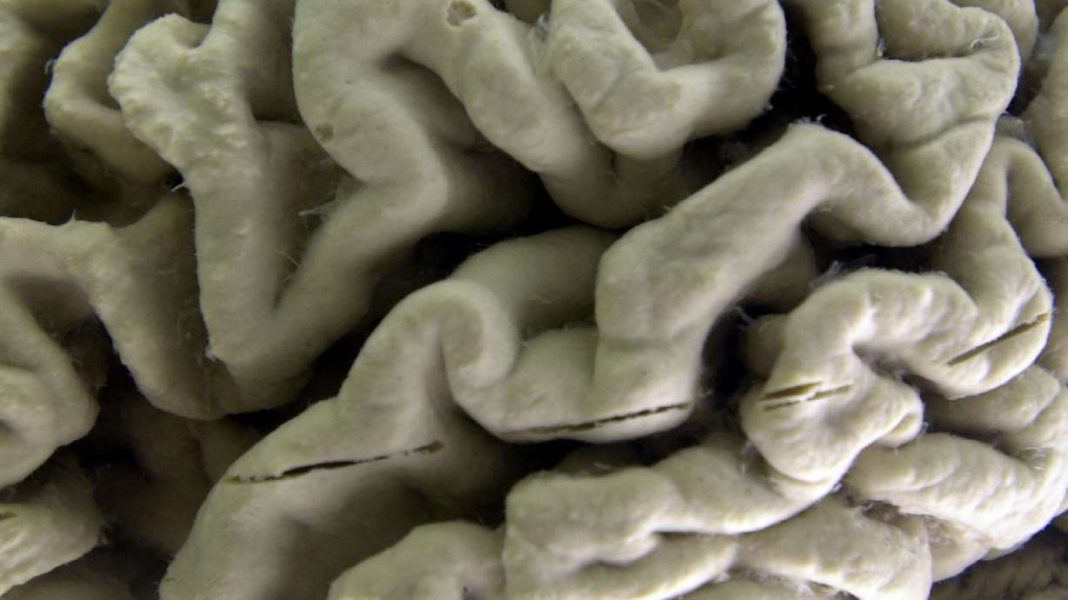WASHINGTON — The insidious progression of Alzheimer’s disease silently wreaks havoc on the brain long before any symptoms become evident. Recent scientific discoveries have shed light on the sequential changes that occur within the brain, potentially providing a window of opportunity for intervention.
In a comprehensive study conducted in China, researchers monitored middle-aged and older adults over a span of 20 years. The study employed regular brain scans, spinal taps, and other diagnostic tests to track the progression of the disease.
The study revealed that individuals who eventually succumbed to this debilitating disease had higher levels of a protein linked to Alzheimer’s in their spinal fluid, a full 18 years before diagnosis. Subsequent years saw the emergence of other biomarkers indicative of impending trouble.
The exact process of how Alzheimer’s develops remains a mystery to scientists. One early sign is the accumulation of a sticky protein known as beta-amyloid, which over time forms plaques that clog the brain. However, the presence of amyloid alone is not sufficient to impair memory, as many healthy individuals’ brains contain significant amounts of plaque. The formation of abnormal tau protein, which creates neuron-destroying tangles, is one of several contributing factors.
The groundbreaking research, published in the New England Journal of Medicine, provides a timeline of how these abnormalities accumulate. Dr. Richard Mayeux, an Alzheimer’s specialist at Columbia University who was not involved in the study, emphasized the significance of the research, stating that understanding the timing of these physiological events is crucial for developing new treatment methods and potentially even preventing Alzheimer’s.
While the findings do not yet have any practical applications, they represent a significant step forward in our understanding of the disease.
Increasing our understanding of potential Alzheimer’s treatment targets and the optimal time to address them will expedite the development of new therapies and preventative measures.
–Claire Sexton, Alzheimer’s Association
Alzheimer’s disease, the most common form of dementia, affects over 6 million Americans and millions more worldwide. Currently, there is no cure. However, last year saw the approval of a drug named Leqembi, the first to show clear evidence of slowing the progression of early Alzheimer’s, albeit temporarily.
Leqembi works by clearing some of the amyloid protein. This approach is also being tested to see if treating high-risk individuals before symptoms appear can delay the onset of Alzheimer’s. Other drugs targeting tau are also in development.
Monitoring silent changes in the brain is crucial for such research. Scientists already knew that in rare, inherited forms of Alzheimer’s that affect younger people, a toxic form of amyloid begins to accumulate about two decades before symptoms appear, with tau kicking in at some point later.
The new findings reveal the sequence in which these biomarker changes occur in more common old-age Alzheimer’s. Researchers from Beijing’s Innovation Center for Neurological Disorders compared 648 people who were eventually diagnosed with Alzheimer’s with an equal number of healthy individuals. They found that the first sign in future Alzheimer’s patients was the amyloid finding, 18 or 14 years before diagnosis, depending on the test used.
Next, differences in tau were detected, followed by a marker indicating problems in neuron communication. A few years later, differences in brain shrinkage and cognitive test scores between the two groups became apparent.
“The more we understand about potential Alzheimer’s treatment targets and the optimal time to address them, the faster we can develop new therapies and preventative measures,” said Claire Sexton, the Alzheimer’s Association’s senior director of scientific programs. She added that forthcoming blood tests promise to further aid research by making it easier to track amyloid and tau.




Good grammar; Disagree. Alzheimer’s is a devastating disease and more research is needed to understand its impact on the brain.